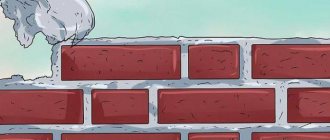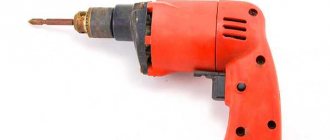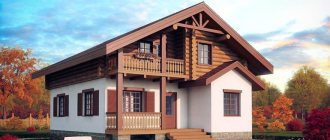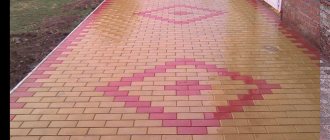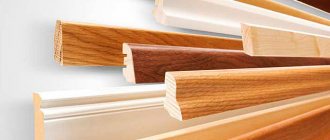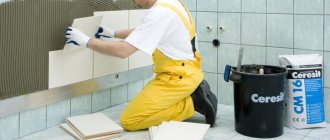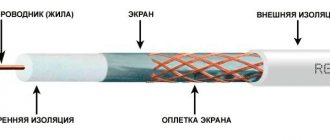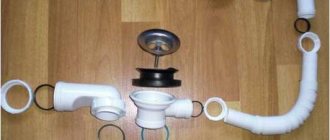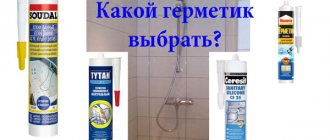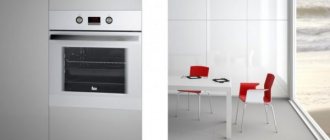- Thermal conductivity
When planning the construction of a residential building, the customer, willy-nilly, has to be puzzled by the choice of wall material. Most often they compare brick or aerated concrete - which has better characteristics and is easier to do independently. And most importantly, which house will last longer and which one will have a more comfortable microclimate? Let's consider all the features of these materials.
Advantages and disadvantages of brick and aerated concrete
It is impossible to compare materials without knowing their positive and negative qualities. We know more about brick, since it has been known to humanity since the times of Ancient civilizations. Its durability has been confirmed by numerous archaeological excavations, while its opponent, aerated concrete, has been used for only about 80 years (in Russia even less).
However, for a good house, not only its service life is important: what’s the point if it will stand for a long time, but it will be cold in it? The cost of brick and aerated concrete also matters, because everyone wants to get the optimal combination of quality and price. And it can only be known through comparison.
We present a table of characteristics of two materials:
| Material evaluation criterion | Brick | Gas block |
| Durability of buildings | Counts in centuries. | There are no exact data because the material is relatively new. |
| Strength | For the construction of load-bearing walls of low-rise buildings, the M150 grade of brick is used. Its density is about 2100 kg/m³, and its compressive strength corresponds to class B12.5. | For laying load-bearing walls of aerated concrete houses, blocks of grade D 500 or D 600 are usually used. Concrete of this density corresponds to class B4. It can withstand a maximum load of 50 kg/cm², which is typical for the lowest grade brick M50. |
| Application for basement walls and foundations | You can build not only basement walls, but also foundations. But only clay, well-fired solid products can be used for this purpose. | Some manufacturers claim that their gas blocks can be used for laying basement walls. Please note: Such statements contradict the current construction regulations (SP 15.13330 clause 9.1), which clearly states that cellular concrete cannot be used either for foundations and basements, or even for plinths. |
| Thermal conductivity (W/m*C) - the lower the coefficient, the better | Depends on the type and structure:
| Depends on the density of the stone:
As you can see, the thermal conductivity indicators of the two materials are very different. Comparison of aerated block and heat is definitely not in favor of the latter. |
| Specific heat capacity of brick and aerated concrete (kJ/kg*C) | 0,88 | 1,0 |
| Frost resistance | From 100 cycles | From 25 cycles |
| Fire resistance | Not flammable | Not flammable |
| Eco-friendly factor (the lower the better) | 10 | 2 |
| Vapor permeability µ/ mg/(m*hour*Pa) | 0,11 | 0,20 Note: The higher the coefficient, the greater the likelihood of moisture accumulation in the thickness of the walls. The problem is mitigated by internal vapor barrier and external ventilation gap. Through it, vapors pass unhindered through the enclosing structures. |
| Sound transmission with a wall thickness of 250 mm (dB) | 53 | 52 |
| Shrinkability | 0 | 0,5 |
| Water absorption | Up to 9% | Up to 25% |
| Aesthetics and architecture | Products are not only ordinary, but also facial. There are also decorative ones, on two or four sides of which are applied: relief, glaze, engobe or shotcrete. Various laying schemes also provide inexhaustible design possibilities. | Gas-block masonry is unaesthetic and requires mandatory finishing on the façade side. |
| Price of 1 m³ of material (at the beginning of 2021) | 5643 rubles (ordinary, for the main masonry). | 1500 rubles. Which is cheaper - brick or aerated concrete , obviously. |
| Labor intensity of masonry m²/hour | 3 or more hours. | 1 hour. |
| Standard dimensions (mm) | 250*125*65 | 600*200*300 |
| Weight of 1 m³ of material | 1850 kg (full). | 780 kg |
Why are they compared with aerated concrete blocks and foam blocks?
Brick is often compared with other wall materials to determine functionality, efficiency, characteristic technical qualities and pricing in relation to the consumable used. Brick is similar in its characteristics to foam blocks and aerated concrete blocks, but they are considered more compact in size and are many times cheaper in price.
Using bricks, you can build load-bearing (structural) walls, as well as partition walls (structural and thermal insulation) . In addition, bricks are used to create columns, pillars at the corners of the house and lintels. Gas blocks and foam blocks are also suitable for these purposes, but working with these large materials speeds up the process several times.
Unlike the materials presented, brick does not always require additional external insulation, finishing and cladding. And gas blocks and foam blocks need waterproofing, since their porous structure is capable of absorbing water, and without creating a coating to protect it from water and external atmospheric influences, the wall structure will quickly collapse.
Each of the building materials for the construction of walls is in some way inferior to brick, but the search for an alternative replacement for the popular building stone over the past 10 years has become widespread in the manufacturers' market in the world, thanks to the dimensions, price segment and technical qualities of new artificially created stones.
Types of bricks
Brick is a product with precisely specified geometric parameters used for masonry, which are made from mineral binders with the properties of stone. In principle, any concrete block fits this definition. However, for solid bricks, according to the standard, the minimum strength grade is M100, and the largest format is 1.8NF (288 * 138 * 88 mm).
Expert opinion Vitaly Kudryashov builder, aspiring author
Ask a Question
Note: Stone (aka block) has a strength of M25 and a format increased to 15.6NF (260 * 510 * 219 mm) - which is why it differs from brick.
Today, bricks are made not only from clay, but also using firing technology. They use autoclave synthesis methods using lime and dry pressing technology. The last option is used mainly for cladding and building fences, so we will not pay attention to it. We'll tell you more about the rest.
Ceramic
Clay bricks and ceramic stones used for the construction of load-bearing walls and their cladding are produced according to the 530*2012 standard. Depending on the purpose, the products are either ordinary for the main masonry, or facing for finishing. This separation only affects the appearance of the products, but does not reduce their strength characteristics. Masonry made from facing bricks (if it is also solid) is just as reliable as from ordinary bricks.
- The brick can be either solid or have vertical or horizontal voids. Standard format (1NF) is width 120 mm, height 65 mm, length 250 mm. All others, including blocks, are also tied to this format.
- A product is considered solid if the presence of voids in it does not exceed 13%, or there are none at all. If there are more holes or slots, the product is hollow.
- The maximum strength of ordinary ceramic bricks corresponds to the M300 grade (compressive strength 300 kg/cm²). But there is also a clinker version, which is made from refractory clay and fired at higher temperatures. For him, M300 is the minimum strength grade, the maximum is M1000.
- The range of frost resistance indicators is from F25 to F300 - it all depends on the type of product and its structure. The density of brick varies between 700-2400 kg/m³.
Depending on the number and size of voids, the thermal conductivity coefficients (W/m*C) also change. According to this indicator, hollow products are divided into:
- ordinary, with low efficiency (0.46);
- conditionally effective (0.36);
- effective (0.24);
- increased efficiency (0.2);
- high efficiency (less than 0.2).
Expert opinion Vitaly Kudryashov builder, aspiring author
Ask a Question
Please note: The heat transfer of ceramic products depends on their density. But even high-performance brick cannot compete with aerated concrete in this category. The latter can be thermally insulating, with a thermal conductivity coefficient of no more than 0.07. This indicator is comparable to the same characteristic of rigid mineral wool, although the strength of such material is not even standardized. It is used only in conjunction with structural aerated concrete - as an internal, non-load-bearing layer of masonry. Using a similar scheme, you can use brick and aerated concrete d200.
Appearance
The appearance of ceramic bricks is very diverse. The edges of ordinary products are smooth or grooved - the latter are usually used for backfilling of masonry (laying out the inner mile).
- Facing bricks can be painted in bulk or made using a two-layer molding method, when the product itself is formed from red clay, and the front edges are covered with colored or colorless.
- Engobe is also used to decorate bricks: liquid colored clay is applied to the raw material and fired once.
- Another way to texture brick is glazing. Glass powder is applied to the already fired product and sent back to the kiln.
- The method in which glass chips, granules of tuff, quartz, mica, porcelain or fireclay are applied using jet equipment (under pressure) is called shotcrete.
Expert opinion Vitaly Kudryashov builder, aspiring author
Ask a Question
Note: The mentioned methods allow you to obtain incredibly beautiful products that are also worthy of use in the interior. For example, if you build an internal partition from such bricks, you can get an accent wall without worrying about its finishing.
Production Features
Making bricks from clay is a rather labor-intensive and time-consuming process. The reason for this is the raw materials, which must be processed in a certain way. In particular, the clay is subjected to freezing, after which it needs to rest.
- This is done so that unwanted impurities in the clay are destroyed, and the more cycles of freezing and thawing this raw material can withstand, the higher its quality. The natural aging process takes some time, but allows you to reduce energy costs.
- Most companies involved in brick production have their own quarries and are in no hurry to introduce innovative technologies. Each manufacturer decides for himself exactly how to organize the process of preparing raw materials. Although modern equipment makes it possible to speed it up.
- The settled clay received for production is mechanically processed, crushing and removing solid inclusions. It is ground, moistened and passed through rollers with holes as if through a meat grinder.
- A beam of a given section is formed from homogeneous, well-kneaded clay dough - its sides correspond to the width and length of the brick. Bricks with precise parameters are cut from this timber, after which they are sent to a drying chamber with a controlled coolant temperature.
Next, the brick is fired, gradually raising the temperature to its maximum value. And it, like the duration of the products’ stay in the oven, depends on the brick with what properties it is necessary to obtain. Finished products are rejected and selectively tested in accordance with the standard, after which a passport is issued for the batch and it is sent for sale.
Silicate
Sand-lime brick is combined with clay brick except in size and shape. Their manufacturing technology and raw materials are different, although the finished products are almost the same in their characteristics. The main difference in the main component in sand-lime brick is lime. It began to be used for the production of building stone only towards the end of the 19th century.
- In nature, lime quickly soaks, but as the temperature rises, this process stops and it begins to harden. When it is combined with silica, under the influence of hot steam under pressure up to 1.3 MPa, a durable stone is obtained - calcium hydrosilicate.
- Its density is at least 1700 kg/m³, so in terms of strength, sand-lime brick is practically not inferior to ceramic brick. It is due to the use of silica, partly ground into powder, partly with a coarse fraction. Fly ash or crushed slag can be added to lime.
- What and how much should be present in the lime paste depends on the required characteristics of the products. The lime is first slaked, ground with filler, and mixed with water. The brick is molded and pressed in revolving molds, after which it is sent by trolley to the autoclave.
In the chamber, the raw material goes through three stages: first it is heated with steam, then a stable temperature and pressure are established, after which the steam supply is stopped, and the brick is unloaded after cooling.
Types of products
Sand-lime bricks and stones are produced in accordance with the requirements of GOST 379. Among them there are also ordinary products intended for main masonry, and facing ones, the appearance of which is subject to higher requirements. In addition to solid bricks, there are also hollow ones, with dead-end or through vertical holes. Their quantity is regulated by the manufacturer - the main thing is that the voids in the body of the stone are evenly distributed and the 10-centimeter wall thickness is maintained.
Brands of products in terms of strength, like simple ceramics, vary in the range M100-M300. Frost resistance depends on density, and, like a gas block, is at least 25 cycles. The accepted brick formats are the same as for red brick: single (1NF), with a height of 65 mm and a length and width of 250 * 125 mm. But the standard also provides options:
- One and a half (thickened) with a height of 88 mm. At a height of 138 mm it will no longer be a brick, but a stone (SKR).
- Euro-format (0.5NF), is a longitudinal half of a single brick - has a width of 60 mm.
- Format 0.7NF, with a width of 85 mm.
The last two options are intended for cladding. They can have a smooth, painted, chipped or rusticated surface - or, like clay bricks, they can be decorated by applying shotcrete or engobe to the edges. Ordinary brick is only white, for which the bleaching agent titanium dioxide is added to the raw material.
Sand-lime brick or aerated concrete, which is better?
The main advantage of sand-lime brick (compared to ceramics) can be considered lower cost. It is achieved through an accelerated production cycle, taking just over 12 hours. It takes 5 days to receive finished clay products. Considering that silicate is not inferior to ceramics in strength, its advantage is obvious.
Expert opinion Vitaly Kudryashov builder, aspiring author
Ask a Question
Note: Since sand-lime brick (as well as aerated concrete) contains lime, its constant interaction with moisture can lead to a decrease in the strength of the masonry. For this reason, these materials are not recommended for use below the horizontal waterproofing line located between the main wall and the plinth.
The water absorption of sand-lime brick is less than that of aerated concrete due to its higher density. But relative to clay products, with the same density, for silicate this coefficient is 4% higher. You can build a bathhouse from it, but you definitely need to protect the walls from the inside with a vapor barrier material.
Sand-lime brick is not used only for the construction of stoves and fireplaces - it also does not like elevated temperatures, and due to heating it loses strength. For any other construction, this material is an excellent choice. However, the same bathhouse built from aerated concrete will retain heat much better.
The answer to the question about aerated block or brick - which is better and more profitable - cannot be unambiguous, so we continue the comparison.
Comparison of products for home construction
The qualitative characteristics of materials compared to brick are indicated in GOSTs and SNiPs, which fully describe it, establish rules for installation, calculations for structural walls, and also provide references to other regulatory documents.
What the materials described (foam blocks, gas blocks, bricks) have in common is that they all belong to artificially created stones, the composition of which is mixed in molds .
But the brick is fired in industrial kilns at high temperatures, and foam blocks and gas blocks, after they are compacted and poured into molds, are left to dry in a specially adapted room at room temperature. Also, compositions for foam blocks can additionally be processed by autoclaving.
The substances that make up building stones are obtained naturally , and, therefore, are environmentally friendly and safe for human health. In addition, the surface of all products is not prone to the formation of mold and fungi on the surface of the wall structure. But the materials themselves require a strong foundation and carefully completed groundwork.
Each of the listed products when laying requires mandatory reinforcement (every 3-4 layers), the elimination of cold bridges, and the creation of standards for the thickness of the wall pie, which for the southern regions is at least 25 (cm), for the central regions - 40 (cm), northern – 60 (cm).
Despite the fact that materials differ in construction speed (brick - 1-2 months, foam blocks and gas blocks - 2-3 months), with a ready foundation, they all have good thermal insulation qualities and are considered durable and strong .
Both bricks and foam blocks with gas blocks will definitely need insulation and finishing from the inside. The outside of the brick is rarely finished, only if the owner of the building himself wants to change the siding design. Brick looks aesthetically attractive. Aerated blocks are more suitable for forming an internal thermal insulation layer, which can be installed behind internal walls made of any material, including brick, as well as for partition walls.
Recently, the production of aerated blocks has been improved, and products have already appeared on the market that can be used for main (load-bearing) walls. They are made from strong grades of cement, additives and more concentrated aluminum oxide (or other foaming agent).
Foam blocks are considered stronger than gas blocks, since the pores of the latter are wider and are very susceptible to ambient humidity. Therefore, any porous materials from which walls are built must be waterproofed on both sides, plastered and finished.
The main regulatory documents characterizing artificial building stones are:
- brick - GOST 530-2012;
- foam block - GOST 21520-89;
- gas block - GOST 31360-2007.
What is better to choose for building a house: brick or aerated concrete?
We talked about all the main characteristics of the materials separately. Now let’s compare brick and aerated concrete, taking into account ease of construction and comfortable operation. After all, both materials have both pros and cons.
Thermal conductivity
We return again to the thermal conductivity of brick and aerated concrete. This is perhaps one of the most important criteria for assessing wall material, on which the thickness of the walls ultimately depends. The higher this coefficient, the thicker the wall should be, which entails increased costs for the zero-cycle device. There is a difference in how much concrete it will take to pour the foundation for a wall 60 cm thick or 40 cm thick.
- Due to its reduced thermal conductivity, aerated concrete is more preferable for building a house, as it allows the thickness of the walls to be reduced to a minimum. Especially if you also include insulation in the wall pie.
- However, do not forget that block masonry cannot remain open like brick masonry. It requires finishing, which, in principle, “eats up” all the savings obtained from the reduced volume of concrete required to pour the foundation. The benefit remains only due to the fact that aerated block is cheaper than brick.
- Whatever one may say, brick is too heavy, expensive and labor-intensive to install. Aerated concrete masonry has an unpretentious appearance and requires protection from both atmospheric moisture and vapors penetrating from within. Both have disadvantages, and they are leveled out in different ways.
- For example, in order to lighten a brick wall, the masonry is made into a well, filling the free space with loose or foam insulation. Almost the same thing happens when a house is built from aerated concrete and brick: the inside is made of blocks, and the outside is brick facing.
- At the same time, thanks to gas blocks, the walls become warmer, and their cost is reduced. Brickwork on the outside protects from wind loads and humidity, and provides the building with a presentable exterior.
These materials compensate for each other's shortcomings, so combined walls become simply the ideal solution. And if so, it hardly makes sense to calculate what is cheaper to build a house from - brick or aerated concrete.
Frost resistance and water absorption
These two indicators are interrelated, since frost resistance is the ability of a building material to maintain primary strength for a certain number of cycles of alternating freezing and thawing. In this case, the material must be saturated with water, otherwise there will be nothing to thaw. A material that can absorb more water will withstand fewer cycles.
In this case, it is aerated concrete. The main task that needs to be solved when building from it is to prevent the masonry from coming into contact with water. External brick cladding will help to cope with the problem; it is the most durable. Therefore, to the question of what is better: aerated concrete or brick for building a house, we can safely answer: a combination of both.
Fire resistance
Now let's consider what is better - a house made of brick or aerated concrete from the point of view of fire safety. The durability of buildings is determined not only by their frost resistance, but also by the resistance of the walls to fire. This is the ability of a material to maintain load-bearing capacity, integrity and thermal insulation, preventing the spread of fire.
Since the brick is produced by high-temperature firing, it is not afraid of exposure to open fire and can last at least 5 hours at 900 degrees Celsius. It is even used for cladding structures specifically to increase their fire resistance. Only the brick taken is either iron ore (well-burnt red) or fireclay, made from refractory clay.
When silicate is heated above 300 degrees, it loses up to half its strength. Its fire resistance limit is 2.5 hours at 600 degrees. In such conditions, aerated concrete performs better than sand-lime brick, but is inferior to clay brick. Its fire resistance limit is 4 hours with a wall thickness of 375 mm. The conclusion suggests itself: by lining the walls of a house with ceramic, or even better, clinker bricks, you automatically increase its fire safety.
Advantages and disadvantages
A comparison of artificially created stones according to quality characteristics, pros and cons can be presented in the form of a table:
| No. _ _ | Material type | pros | Minuses | Wed. price in the Russian Federation (RUB) for 1 piece . |
| 1. | Brick |
|
| 8-38 |
| 2. | Gas block |
|
| 62-117 |
| 3. | Foam block |
|
| 95-125 |
Since 1 wall foam block is equal to 18 bricks, and a gas block is 16, then in terms of cost and functionality, larger materials always win compared to a brick wall.
But it all depends on the individual wishes and financial capabilities of the future owner of the house.
There is still an opinion that foam blocks are best used for the construction of utility rooms, basements, garages and even bathhouses, while it is better to use brick to build a reliable house that will last for more than a hundred years.
What's better?
The price of products from manufacturers is constantly changing , depending on the type, purpose and size of the products, and is equal to the table with prices indicated in the previous section. The price is influenced by the region, the speed and urgency of order production, and the distance to the construction site (depreciation services). The installation itself is indicated by companies on their official websites in the price lists of services.
According to ratings among specialists and users, the top three manufacturers of the materials discussed above are:
- Brick – “Altair”, “Stroykeramika”, “LIColor”.
- Gas block – “ECO”, “GRAS”, “Stroykomplekt”.
- Foam block – “UgraBlok”, “Omsk foam concrete.
It is impossible to say unequivocally which artificial stone is better than the other . Since, for example, brick, especially ceramic, is a time-tested material. Aerated blocks are suitable for partitions, but foam blocks can compete well with bricks at the price of a structural wall.
Brickwork is stronger than foam block and is suitable for the construction of load-bearing walls in any climate and any soil seismicity.
